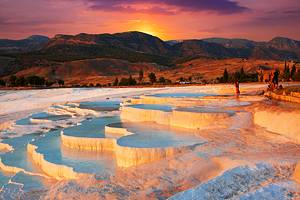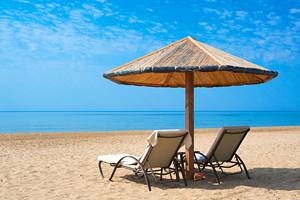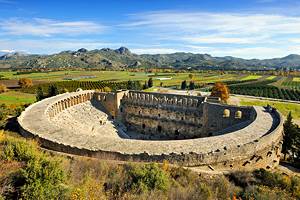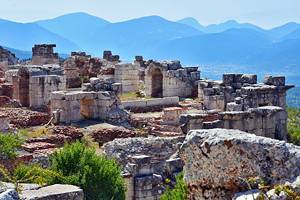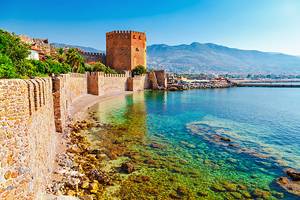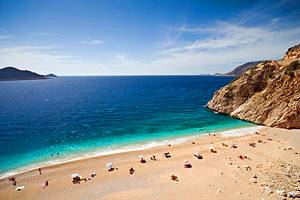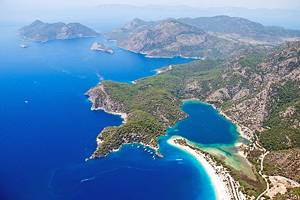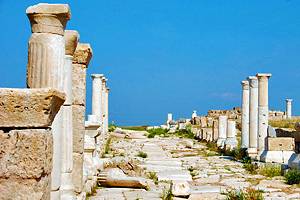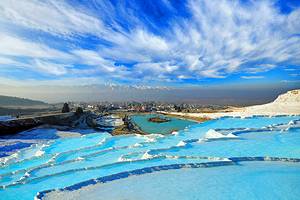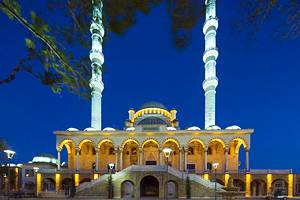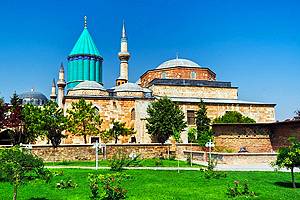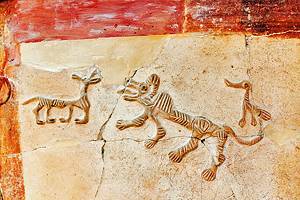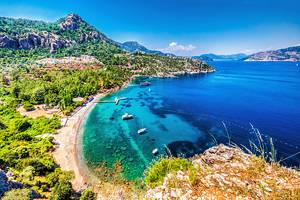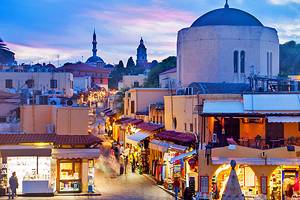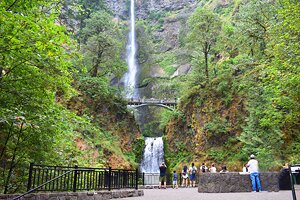Exploring Ancient Olympos and the Chimaera: A Visitor's Guide
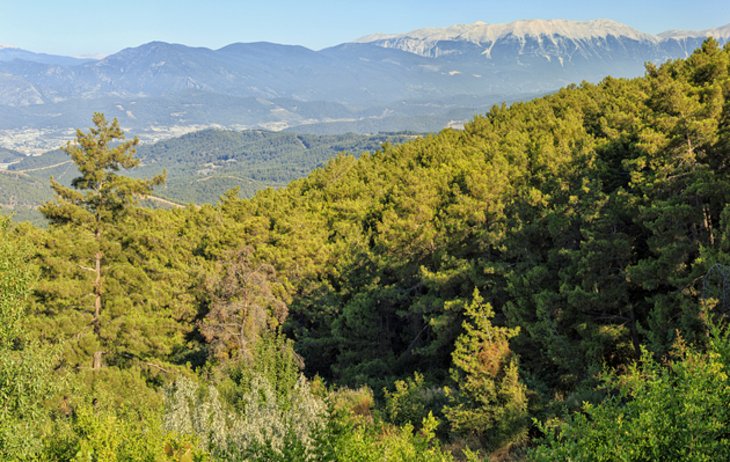
Immediately west of the Gulf of Antalya, the 700-square-kilometer Olimpos Beydağları Milli Parkı (Olympos National Park) stretches from the coast into the rugged pine-clad mountains.
The romantic site of the ruins of ancient Olympos and the fascinating eternal flame of the Chimaera (called Yanartaş in Turkish) are both near the holiday villages of Olympos and Çıralı in the southern section of the park.
Both Olympos and Çıralı are places to kick back and take a rest from sightseeing, and the long shingle beach here, which runs between the two villages, is a major attraction for tourists.
Çıralı attracts an older, European crowd with a family-friendly atmosphere, while Olympos is a backpacker favorite noted for its budget accommodation and many tours offered, particularly rock climbing. At both, though, beach lounging is the most popular thing to do. Both are good bases for visiting the ancient sites of Olympos and the Chimaera although accommodation is of a much higher standard in Çıralı.
The Olympos ruins sit on the rim of the beachfront at Olympos village, but as Çıralı Beach and Olympos Beach are the same swath of shore, the ruins can also be easily walked to from Çıralı.
The Chimaera is located on the slopes of Mount Chimaera, just to the north of Çıralı. Evening trips to the Chimaera are easily organized from both villages (though keen hikers can also walk to the Chimaera).
Those who don't want to stay the night and have their own transport can also easily visit both sites on the scenic coastal drive between Antalya and Kas.
Olympos Ruins
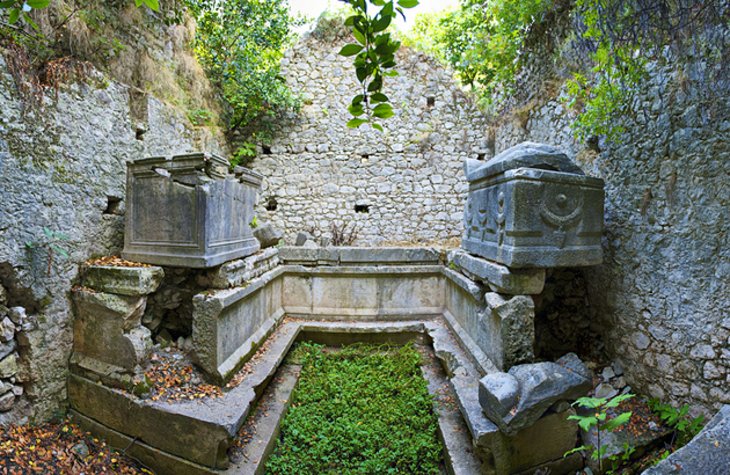
Olympos was once one of the most celebrated cities of the Lycian League (a federation of Lycian cities that even after Roman domination were granted their freedom).
During the Roman period, Olympos was widely known as a cult site dedicated to the fire god Hephaistos (with a grand temple built in his honor at the site of the Chimaera).
There are also references in Plutarch to ritual feasts taking place here in honor of Mithras, the Persian god of light.
The city began to slip into decline due to constant raiding by pirates who plagued the town and eventually captured it, though a successful campaign waged against them by the Romans in 78 BCE brought Olympos under Roman control.
Later, Olympos became an important Byzantine city, and it was only abandoned completely in around the 15th century.
Today, although the ancient Olympos ruins are badly overgrown and in a severe state of dilapidation, the site is incredibly picturesque, standing in a valley, just off Olympos' beach, with the forest densely packed around it.
The remains include a Roman theater, Byzantine basilica, temple, bridge, defensive walls and chamber tombs.
The main part of the site is directly behind Olympos Beach and is easily explored, but for those who want to explore, there are ruins scattered within the surrounding forest.
Chimaera
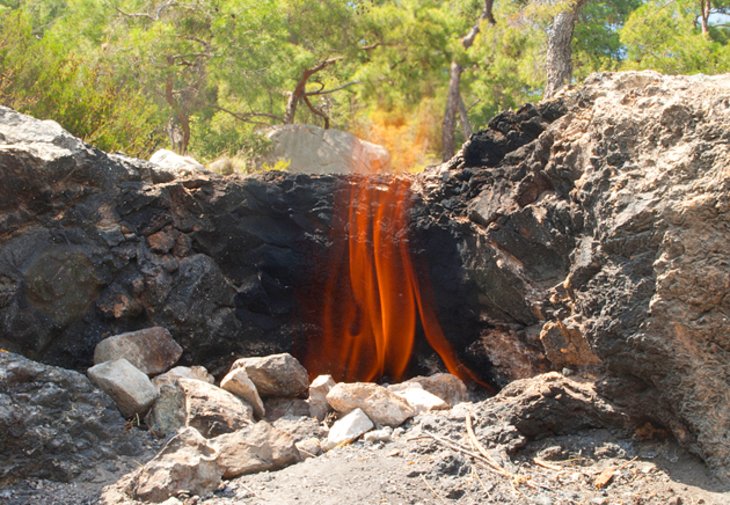
One of nature's great curiosities, the eternal flame of the Chimaera (which many scholars believe to be the starting point of the Greek myth about the fire-breathing monster known as the Chimera) is a natural phenomenon mentioned in many ancient texts, including by the Greek geographer Strabo and the Roman natural philosopher Pliny the Elder.
Natural gas escaping from eighteen or so holes and crevices in the rock has burned here non-stop since ancient times.
Although barely discernible in daylight, the flames after dark are said to be visible far out to sea at night. The gases are still to be properly analyzed but are known to include methane.
To visit, it's best to go at night. You can walk from Çıralı along the marked path to the site. Once you've reached the car park, there is a 150-meter ascent to the top of the hill. From Olympos, the Chimaera site is seven kilometers away.
Olympos/Çıralı Beach

This long sweep of beach changes its name as it heads northeast from Olympos to Çıralı. At the Olympos end, it's backed by a swoop of cliff and the Olympos ruins, but the shore here is very pebbly.
The northern Çıralı section is extremely pretty and has a line of outdoor restaurants and cafés along the shore.
Both are mellow places to toss down your beach towel, and neither get overcrowded.
As with the villages backing the sand, though, both do have distinctly different vibes, with Çıralı the more family-friendly option.
Getting to Olympos & Chimaera
If you don't have your own transport, you can get to both Olympos and Çıralı by public transport. All the buses traveling between Fethiye and Antalya can drop you at the roadside restaurant on the main highway from where small minivans to the villages depart. In winter, though, there are far fewer of these minivan services. Contact your accommodation beforehand to get the up-to-date minivan schedule.
Olympos & Chimaera (Antalya) - Climate Chart
| Average minimum and maximum temperatures for Antalya, Turkey in °C | |||||||||||
| J | F | M | A | M | J | J | A | S | O | N | D |
| 15 6 | 15 6 | 18 8 | 21 11 | 25 15 | 30 19 | 34 22 | 34 22 | 31 19 | 26 15 | 21 11 | 17 8 |
| PlanetWare.com | |||||||||||
| Average monthly precipitation totals for Antalya, Turkey in mm. | |||||||||||
| 239 | 191 | 102 | 48 | 28 | 8 | 5 | 3 | 13 | 71 | 150 | 224 |
| Average minimum and maximum temperatures for Antalya, Turkey in °F | |||||||||||
| J | F | M | A | M | J | J | A | S | O | N | D |
| 58 42 | 59 43 | 64 46 | 70 52 | 77 58 | 86 66 | 92 72 | 92 71 | 87 66 | 79 58 | 69 51 | 61 45 |
| PlanetWare.com | |||||||||||
| Average monthly precipitation totals for Antalya, Turkey in inches. | |||||||||||
| 9.4 | 7.5 | 4.0 | 1.9 | 1.1 | 0.3 | 0.2 | 0.1 | 0.5 | 2.8 | 5.9 | 8.8 |
More Related Articles on PlanetWare.com
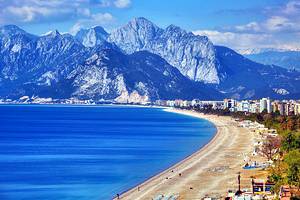
Exploring the Region: To the south is Antalya, one of Turkey's most popular beach holiday towns and a bustling Mediterranean city. To the north is the old fishing village of Kas, with its hiking, diving, boating, and kayaking activities, and the town of Fethiye with its harbor crammed with yachts waiting to whisk you away onto the sea for the day.
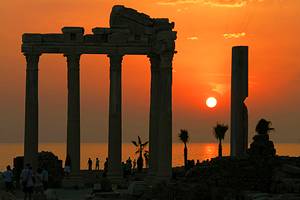
More Ruins: This Mediterranean section of coast is scattered with important Lycian and Roman ruins. Among the most famous are the ruins of Aspendos, with its colossal Roman theater, and the tumbled temple remnants and theater of Side, with its ruins hemming this tiny resort town.



